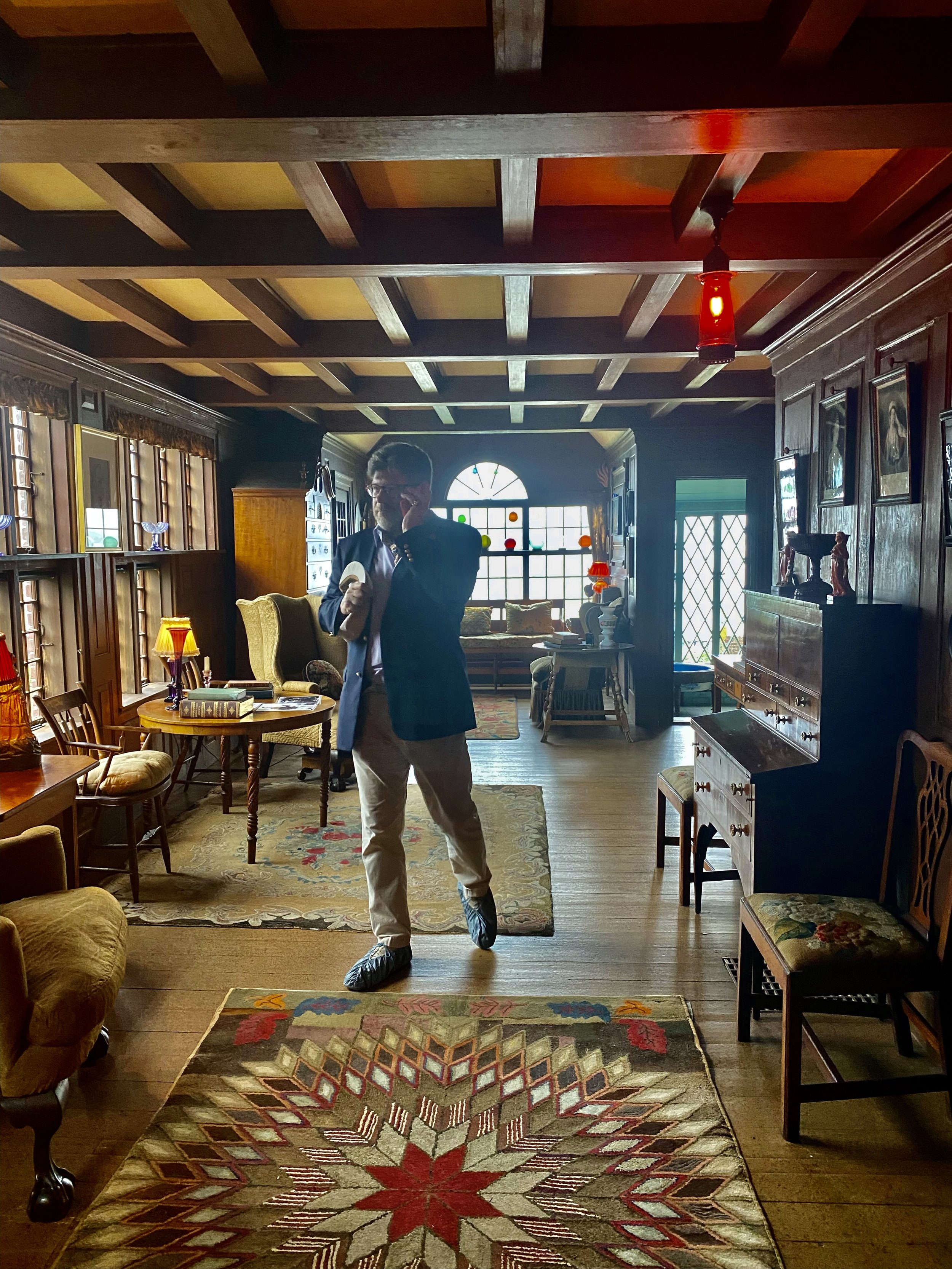Dear Etiquetteer:
I hope this missive finds you well! As an aficionado of museum tours, especially historical house museums, I would love to hear your thoughts on museum etiquette. I sometimes have the misfortune to be on tours with people who seemingly have no idea how to behave. What are the best ways to be a Perfectly Proper museum guest?
Dear Touring:
Your query resurfaced a long-repressed memory of touring the Museum of Fine Arts, Boston, with an elderly lady one might expect to behave with Perfect Propriety. Having waited in line some time to enter the Blockbuster Exhibition of the Moment, she saw absolutely no problem with sitting on a flat granite Chinese tombstone only a few thousand years old. Reprimanded by the guard (“Don’t sit on the exhibits, ma’am!”), she still didn’t think it should be a problem and said so. Etiquetteer no longer wakes up screaming, but it was Most Embarrassing.
Etiquetteer appealed to an acquaintance in the house museum community to find out more about Issues With Tourists and got this: “[They] try to touch something in every single room, ask bigoted questions, and intentionally take photos of the guide when expressly requested not to.” This is probably just the tip of the iceberg.
From the Cittadella in Victoria, on the island of Gozo in Malta.
“Hands off!” is an easy issue to defend. Didn’t your parents ever teach you “Keep your hands to yourself?*” Museums large and small share the challenge of simultaneously preserving collections while making them available to a curious public. We learn through touch — especially, but not only, children — so of course people are going to be tempted to finger those velvet curtains, ancient stone walls, etc. Resist! Natural oils from hands degrade artifacts of all kinds, so it’s extremely important to restrain yourself. If a guide has to reprimand you, it’s your own fault.
“There’s no such thing as a stupid question” is quite simply untrue — unfortunately, because we learn by asking questions even more than by touch. Etiquetteer is sort of afraid to ask about the bigotry you’ve witnessed (but please contact Etiquetteer with examples). The charitable explanation is that people ask These Sorts of Questions out of ignorance. This is probably happening more, too, because previously repressed history is more openly incorporated into exhibitions. Tour guides are not just narrators but educators. This is their opportunity to educate, kindly but deftly and decisively. Having been in this position before, Etiquetteer knows what a challenge it is.
Photographs are a much thornier issue in the era of social media. Consent, as the children say nowadays, is sexy. And this means that if someone is going to be in a photo, you should ask permission first — and be prepared not to take the photo if someone declines. In some ways being photographed feels like a reasonable occupational hazard for tour guides, as guides — especially historic interpreters in costume — could be considered part of the museum’s experience. Is ending up in someone’s travel album a reasonable occupational hazard? Perhaps it isn’t when it’s social media and one risks getting tagged, either within one’s museum or shudder one’s individual accounts. If a request not to be photographed has been communicated and obviously disobeyed, the Miscreant Tourist should be requested to delete those photos. Guides may wish to request an official policy from their museum employers.
Finally, there is That Tourist who is too eager to share his/her own knowledge of the topic at hand. Etiquetteer knows the type well; sometimes it’s That Mr. Dimmick Who Thinks He Knows So Much. This happens for a few reasons, including a) blinding enthusiasm for the subject, b) a sincere wish to correct an error in the presentation, c) a malicious wish to upstage the guide and impress one’s own superiority on everyone else, and/or d) just plain ol’ Lack of Social Skills. Yesterday That Mr. Dimmick succumbed to types a) and b) on a “Nooks and Crannies” tour of Beauport — long a favorite destination, and with an absolutely wonderful guide of inexhaustible patience and knowledge. Sometimes, we need to be reminded not to interrupt and to hold questions until the end. Mr. Dimmick, are you listening?
Whether tourist or guide, Etiquetteer wishes you a safe, informative, and hands-off Museum Experience.
At Beauport, the Sleeper-McCann House. Notice the shoe covers over the shoes to preserve carpets and floor surfaces. When asked, wear them obediently.
*Sadly, Etiquetteer thinks that answer might now be “No.”



